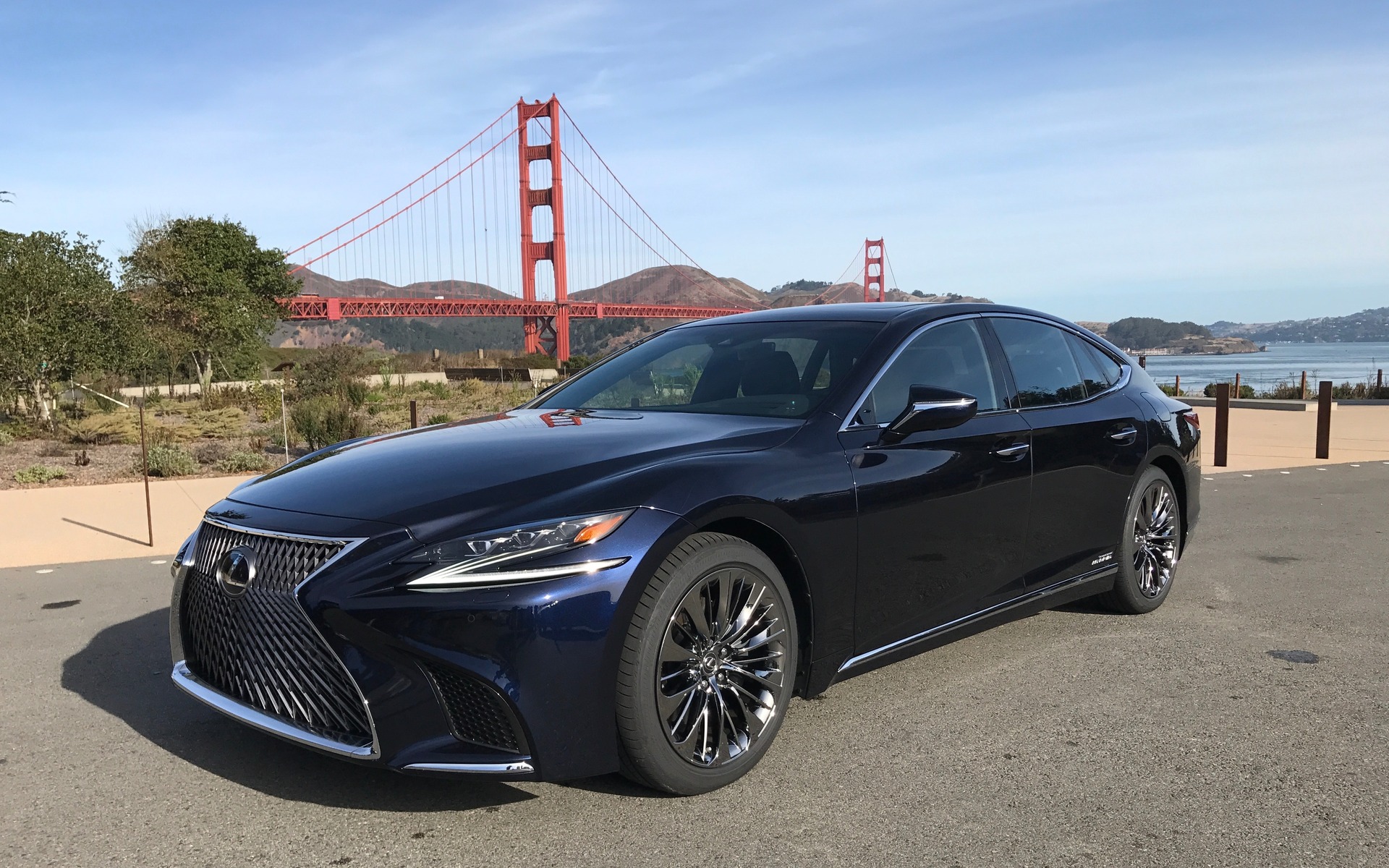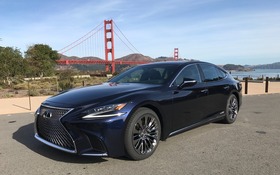2018 Lexus LS 500: More Refined and More Dynamic

| Strong points |
|
|---|---|
| Weak points |
|
SAN FRANCISCO, California – Late in 1989, the arrival of the very first generation of the Lexus LS sent shockwaves through the then German-dominated luxury sedan segment. With a quality design, obsessive attention to detail, rock solid reliability and, most importantly, a more affordable price range, the LS forced the category heavyweights to rethink their position.
Since that bygone era, the LS has evolved, but none of the subsequent generations has had as much impact as the first. With the new fifth-gen LS, the brand’s management hopes to gain momentum with a more daring style and improved dynamics.
- Also: Lexus LF-FC Concept: Heading Down the Hydrogen Path
- Also: Lexus UX Concept to be unveiled at Paris Auto Show
“No more boring cars”
That’s the mission statement made by Akio Toyoda, President and CEO of Toyota, following his visit to the 2011 Pebble Beach Concours d’Élégance and after which he challenged his designers to blaze a new trail for the Lexus brand.
The recent Lexus LC coupe was the first vehicle designed with that philosophy in mind and the fifth-generation LS sedan continues in this same vein.
A real looker
Built on the GA-L (Global Architecture-Luxury) platform, the new LS not only uses the same extra rigid structure as the recent LC coupe, but also its style elements and technological arsenal. The 2018 Lexus LS is nothing if not striking, with an imposing trapezoidal three-dimensional hourglass grille that is reflected in the car’s tail end, where exactly the same theme is used.
The steep incline of the windshield and the backward-plunging roofline energize the overall effect. There are some interesting details like the chrome strip located in the side skirt between the wheels and the rear bumper, which is reminiscent of a samurai katana.

Japanese-inspired haute couture
The Japanese identity is very present in the car’s cabin. You can see it in the laser-sculpted wooden inlays and the kiriko-style cut glass ornamentation, a first for a production vehicle. Note the pleated fabrics covering the inside of the doors and the uniquely shaped armrests for improved comfort. All these elements take their inspiration in the handcraft traditions of Japanese takumi.
The dashboard employs the same theme as the recent LC, combining finesse and modernity, the instrument cluster having been replaced by an eight-inch LCD TFT screen. The colour head-up display presents information on a very large surface that the driver sees as 24 inches wide.
The front seats have a brand new design and the optional Executive Package will get you rear seats with a massage function. What’s more, the passenger-side back seat is equipped with a footrest and its seatback can be inclined up to 48 degrees. The rear passengers can control the heat/air conditioning and infotainment systems using an electronic tablet housed on the central console between both seats, like a BMW 7 Series.
Strangely, the panoramic roof does not come standard and is only available on option on certain versions. Another surprise is that the conventional sunroof has a screen made of a simple plastic sliding panel that can only be opened and closed by hand, like in a compact sedan. For a car that will run you nearly $100,000, these are significant oversights.
Connectivity and functionality
Apple CarPlay and Android Auto are not available on the new LS. Instead, Lexus prefers to equip its luxury sedan with its own system known as Lexus Enform, which supports applications like Slacker, Yelp, Pandora, iHeart Radio and NPR One, among others.
A new version of the Remote Touch telematics system comes in the LS: you can now trace letters and numbers with your finger on the surface. Using Remote Touch while driving remains difficult, however, and demands too much of the driver’s attention. I learned my lesson when the coffee cup-shaped warning light appeared on the central screen¾the car having detected swaying and suggesting that I take a break even though I had only been driving for 20 minutes.

A brand new twin-turbo V6
To power the 2018 Lexus LS 500, the brand’s engineers decided to design a new twin-turbo V6 rather than use the V8 that already equips some of the brand’s other models, but is starting to show its age.
This 3.5-litre engine offers a very linear torque curve, peaking at 443 lb.-ft. available between 1600 and 4800 rpm, which means the power reserve is always available. This engine works very efficiently in concert with a 10-speed automatic gearbox provided by Aisin. This new powertrain transforms the LS's dynamics, taking it far beyond that of the previous version and the car is able to clear the 0-100 km/h sprint in 4.6 seconds. The only problem that we can see is that the gearbox is a little slow to downshift in sporty driving conditions.
Surprise!
This LS's handling is also much sharper than before. The fifth-generation LS doesn’t sacrifice handling for comfort at any cost (as the previous version did), but it now lets you fully appreciate the dynamics. This represents a major change of direction for Lexus.
That said, the LS remains a big sedan that is very heavy, but the change is profound. The dynamics have been turned up several notches thanks to the rigidness of the new GA-L platform and the new multilink suspension with double ball joints in front.
This Lexus LS will be sold in Canada in the first quarter of 2018 in three versions, all of which will be equipped with standard all-wheel drive. Specifically, the LS 500 will be accompanied by the hybrid LS 500h and the LS 500 F SPORT. Read about the hybrid LS and sport LS test drives here.
The price range will only be announced a little before the vehicles are released. For comparison’s sake, the base prices of the 2017 LS 460 AWD and 2017 LS 460h AWD are respectively $97,140 and $133,290. Lexus unloaded 95 units of these versions in Canada in 2016 and 37 more units in the first eight months of 2017.
The new LS doesn’t redefine the category like the first generation did, but it certainly does demonstrate Lexus’ willingness to step up its design and dynamics to compete with the German rivals.











